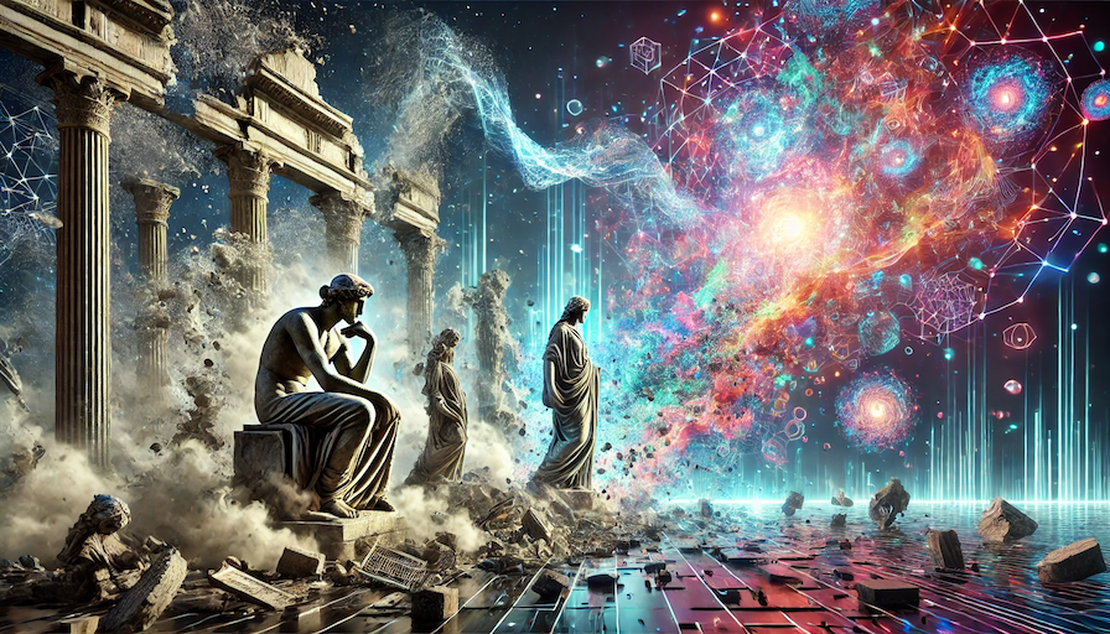The Interplay of Art and Science in the Digital Age
As technology evolves, so too does the art that reflects humanity’s ever-changing relationship with the universe. The convergence of art and science stands at the crossroads of inspiration and innovation, reshaping our cultural narratives and the very fabric of creative expression. This blog delves into the transformative possibilities emerging from these intersections, considering their potential to redefine both creativity and human experience.
The Next Evolution of Art
The flow of artistic expression, influenced by hyper-consumption, hyper-addiction, and hyper-automation, offers a glimpse into the future. Digital tools and AI have become integral to the artist’s palette, challenging conventional norms and enabling hybrid forms of creativity. Virtual and augmented realities are expanding artistic horizons, making immersive and participatory art more accessible to audiences.
Consciousness and the Universe
Art often mirrors the profound questions posed by philosophy and science. The study of consciousness, as it relates to perception and reality, has become a fertile ground for exploration. Art inspired by quantum mechanics, relativity, and the mysteries of existence encourages us to see the world through new lenses, reminding us that our perceptions are but one version of reality.
The Interdisciplinary Synergy
Philosophy, mythology, and psychology provide essential frameworks for understanding the human condition. By intertwining these disciplines with technological advancements, art can offer a more comprehensive reflection of contemporary society. From reinterpreting ancient myths in digital formats to exploring psychological archetypes through interactive experiences, the boundaries of creativity are dissolving.
The Destruction of Digital Art Pre-Generative AI
Before the advent of generative AI, much of digital art in commercial and entertainment sectors leaned heavily on templates, repetitive designs, and formulaic production. This approach often prioritized efficiency and marketability over genuine creativity, leading to a saturation of unoriginal content. In industries where creativity was not a requirement but rather an afterthought, digital art became a means to an end, stripped of its transformative potential. This era serves as a cautionary tale, reminding us of the importance of preserving the soul of artistry amidst advancing technological tools.
Conclusion
As we navigate this era of rapid technological progress, the convergence of art and science invites us to reconsider the essence of creativity and its role in our lives. Whether through the transformative power of quantum computing, the nuanced exploration of consciousness, or the redefinition of artistic mediums, this interplay is not just a reflection of humanity but a guiding force for its future. How we embrace and shape these possibilities will determine the narratives we create for generations to come.
⚠️ Please take a look at the LLM Disclaimer
